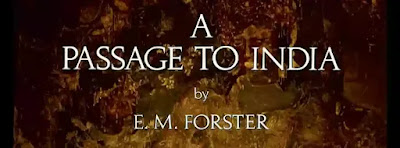Also Read
A Passage to India (1924) is the finest and mature work of E. M. Forster. It is unrivalled in English fiction in its presentation of the complex problems which were to be found in the relationships between English and the native people in India, and in its portrayal of the Indian scene in all its magic and all its wretchedness. It is a nice study of the British rule over India round about 1924.
Accompanied by her son's fiancee, Adela Quested, Mrs. Moore comes to India to visit Ronald Heaslop. Adela accuses a young Moslem surgeon, Dr. Aziz of attempting to attack her in the Marabar Caves. The trial becomes a bitter contest between the English and the natives, but at the crucial point in the trial Adela changes her mind and withdraws the charges. Heaslop packs off Adela and marries another English woman. Although Indians and Englishmen try to make some reconciliation but a great gap lies between them. It is Ronald's belief that Indians and Britons are apart of because of Indian venality but because of cultural differences in temperament, social concepts and religious viewpoints. No passage between the East and the West can be effected. The National individualism of the West collides vainly with the depersonalised mystery of India.
The novel is divided into three parts - Mosque, Caves, Temple. These three divisions are symbolic in character. The cave scenes are the symbolic heart of the novel where India confronts the westerner with illusion and disillusion. Walter Allen finds in the three part divisions of the novel three attitudes to life. Dr. Aziz stands for the path of activity, Fielding and Adela quested for the path of knowledge and Professor Godbole for the path of devotion and love. Mrs. Moore is the embodiment of all these three aspects of life. Forster seeks in the novel to establish bonds of true personal relationship between the East and the West. But he fails to do so. The reason is that the British officials represented in the novel fail to understand the view point of the Indians. Forster draws in Fielding a character whose sympathies with Indians are true and sensitive, but Fielding in the end finds that intelligence, goodwill and culture are not enough to connect East and West. Mosque symbolises the fragile relationships between the Hindus, Muslims and British. The Hindus and Muslims try to live in union, but their traditions and cultures make them apart. The caves symbolise the rupture of relationships. Mrs Moore undergoes a traumatic and nihilistic psychic experience from which she never recovers. Adela whose for Tonny seems to be uncertain has an illusion that she is sexually attacked by Aziz, a muslim doctor. This proves disastrous to all relationships. Even the friendship between Fielding, principal of the government college and Dr Aziz is compromised. The entire community at Chandrapore is sharply divided into opposing racial factions. Mrs Moore dies on the voyage home, and Adela, under extreme psychological pressure admits that she was mistaken. The Temple tries to re-establish friendship and goodwill through the Mau Festival of Hindu Professor Godbole. But the two boats collide and the clay god is drowned. Passage to India cannot be found. However Aziz and Fielding meet and discuss the future of India.
